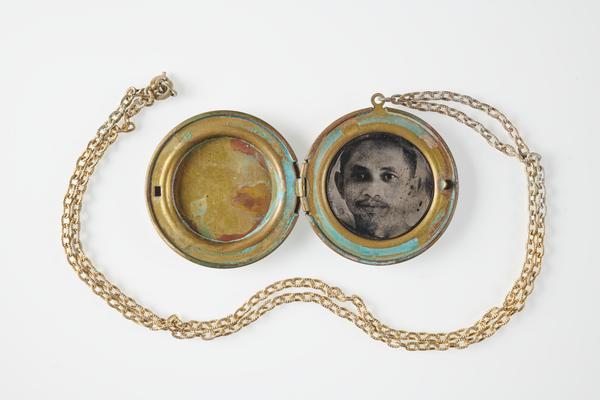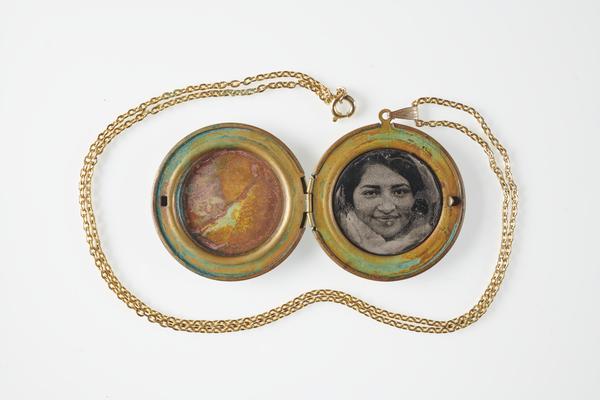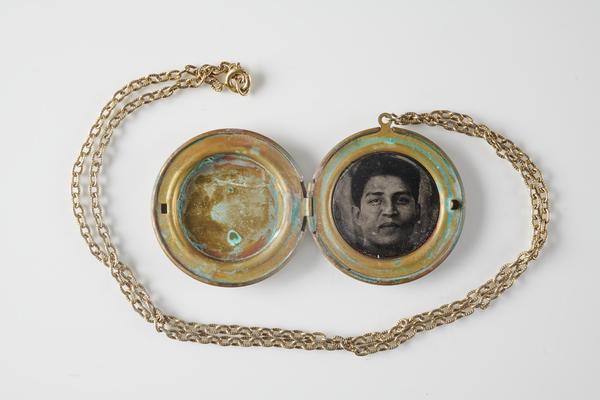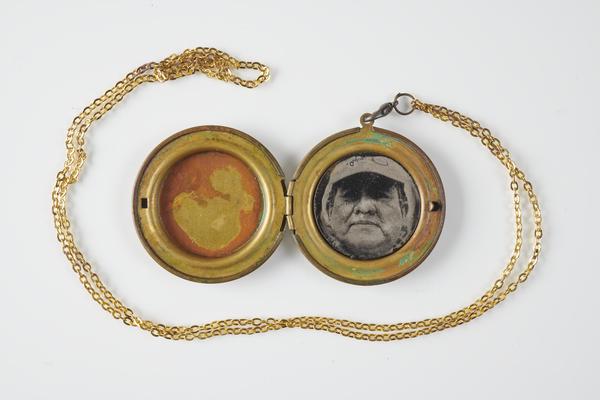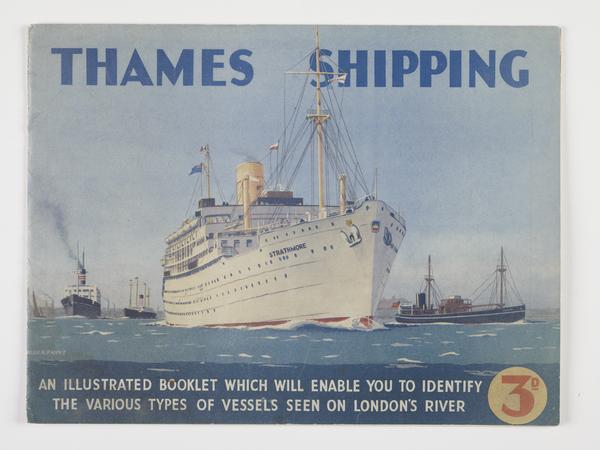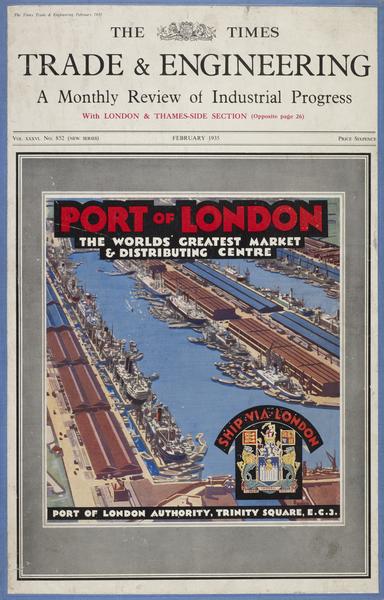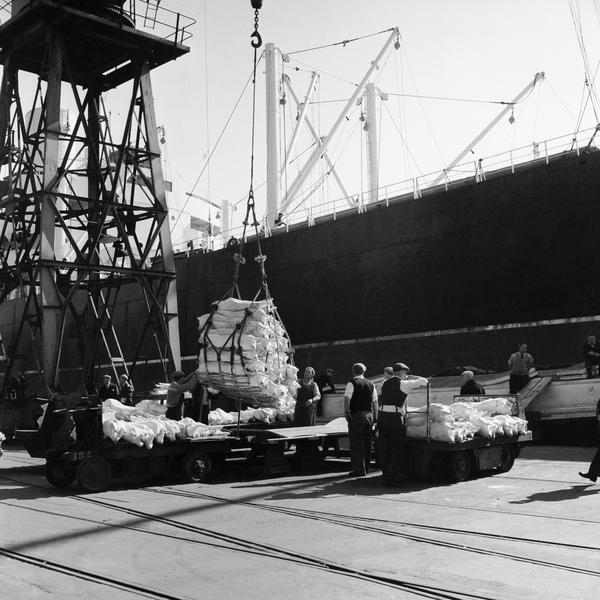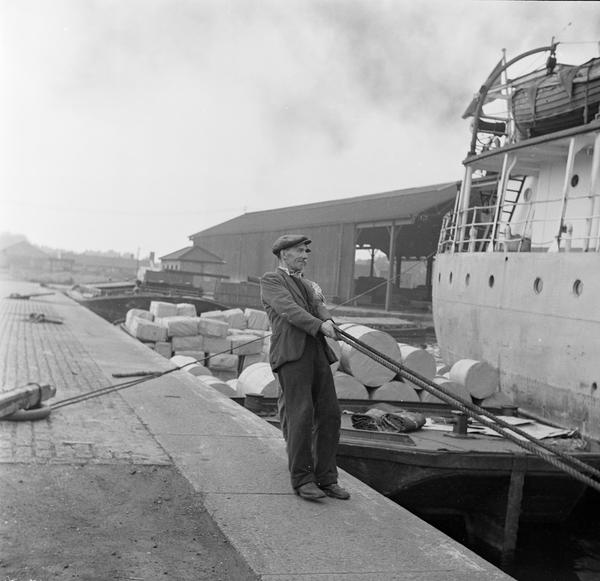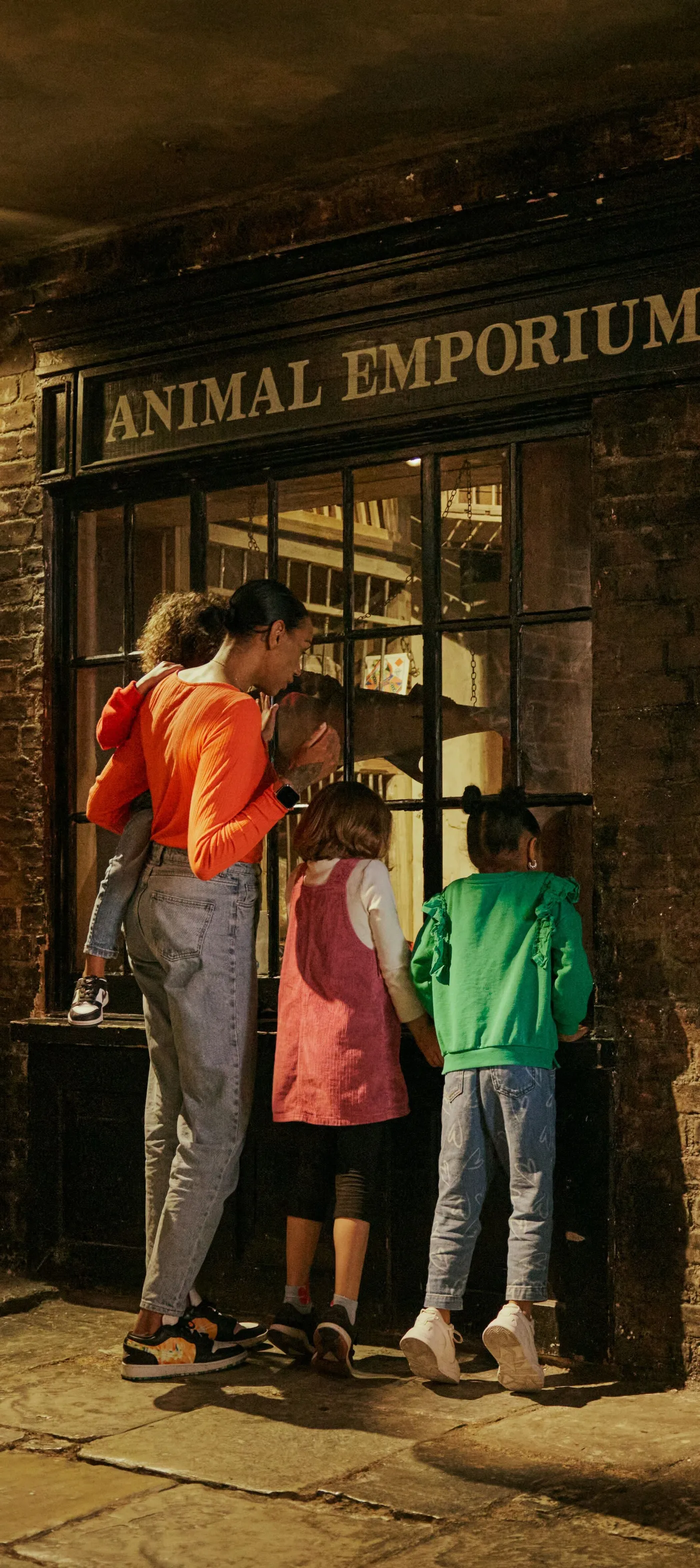Locket portraits of London’s container shipping crews
In the Covid-19 lockdown of 2020–2021, artist Hilary Powell created portraits of container shipping crew from a studio on the River Thames. These tiny tintype photographs were then placed in lockets, little keepsakes that reflect a longing for home in a period of worldwide isolation. She called the project Navigating Light.
River Thames
2020–2021

Tintype photography
Tintype photos, also known as ferrotypes, are created by developing an image directly on a thin sheet of metal, usually iron (not tin). Cheap and quick to develop, they were popular with working-class people in the late 1800s, often used to make portraits at public places like beach resorts.

Powell’s makeshift studio
Powell made these lockets during a residency at Trinity Buoy Wharf in Poplar, where she transformed a shipping container into a tintype photographic studio. She exposed a total of 15 portraits of ship workers onto steel discs, each cut from a shipping container.

The working River Thames
London’s docks contain their own world of international trade, operated by people from all four corners of the globe. But it’s largely invisible and located on the margins of society. Powell wanted to shine a light on the lives of people working in this industry. She made regular visits to the Port of Tilbury, in Essex, for this project.

Housed in lockets
On the back of the golden lockets, Powell engraved the person’s name, job title, ship name, destination port, home city and coordinates of the crew member when the object was made. The lockets are a reference to a kind of historic keepsake that used to be worn close to the heart.

Ties to home – and to the past
The lockets are symbolic of the workers' connection to home while at sea, where they often spend many months on end. But they also draw connections between past and present, between historic photographic processes and the physical material of the present-day container shipping industry.

